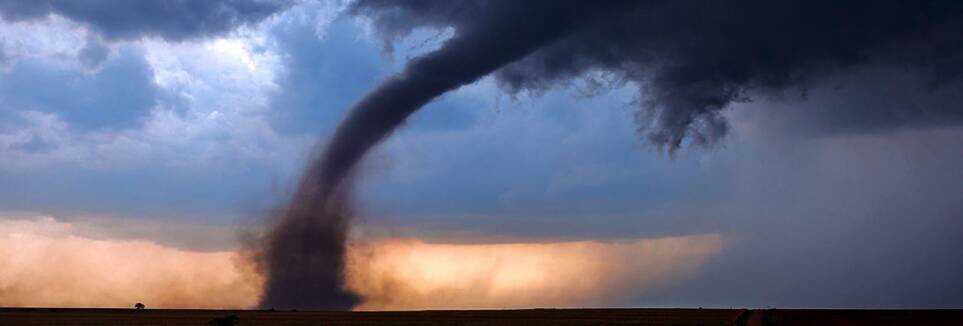TOP STORY OF THE DAY: Let's talk weather, and safety

Extreme weather can happen at any time of year, but most tornados and thunderstorms are usually most prevalent in the spring and summer months.
That is why being prepared for any kind of bad weather is important.
“While we have some tornados in this area, many of our issues come from straight-line winds and power lines knocked down,” said Clay County Emergency Management Director Rob Gambill, who provided some local tips for bad weather incidents. “I agree with having some emergency provisions on hand if you can’t travel the roads for a few days.”

Gambill also recommends determining where to shelter during a severe weather event beforehand and sharing that information with your family, “so everyone knows the plan before needing shelter.”
“I also recommend having a rallying point for family members to meet following an event to be reunited,” said Gambill, who says local highway departments and fire departments are very efficient at getting roadways opened after trees get knocked over. “So the likelihood of being stranded at home for days without access to help isn’t great, but it is possible.”
Gambill said it’s very important if driving after a storm and a person encounters small limbs on the roadway not to remove them by yourself unless you’re positive that there is no entanglement with downed power lines.
“Also, please obey the road closed signs placed by the county highway department,” said Gambill. “If you’re unable to get to your home using the typical route, try an alternative way. If you can’t find any access, you can call the Clay County Dispatch on the non-emergency line (812-446-2535), and they can potentially estimate when the roadway will be reopened.”
Purchasing one or more external cellular telephone chargers, according to Gambill, allows charging a cellphone during a power outage.
“I think it’s very important for people to have a good solid plan on how they will seek shelter and reunite after a severe weather event,” said Gambill. “It is very difficult to formulate a good plan during a crisis.”
The National Weather Service and the Centers For Disease Control provide some basic tips, including:
There is no guaranteed safety during a tornado, so the possibility of one must be taken seriously.
Extremely violent EF5 tornadoes (those reaching wind speeds of 200MPH or more) are rare, but even the lesser categories can cause damage and injuries.
According to the National Oceanic and Atmospheric Administration (NOAA), the 2020 tornado season killed 76 individuals and injured hundreds more: 51% of those victims were in a mobile home or trailer park at the time of the tornado.
Most tornado-prone areas have an outdoor siren system, including Brazil, the Harmony, and Center Point areas, to warn residents of potentially severe weather.
Know how to distinguish between the siren’s warnings for a tornado watch and a tornado warning.
These storms can strike anywhere and cause billions of dollars in damage. Sometimes tornadoes strike quickly, without time for a tornado warning.
Quickly take shelter if you see signs of dangerous weather, like rotating funnel-shaped clouds, an approaching cloud of debris, a dark or green-colored sky with low-lying clouds, large hail, or a large roar that sounds like a freight train. Sometimes severe weather strikes quickly, without time for a tornado warning.
Do not stay in a mobile home, and if you are in a car, do not try to outrun a tornado but instead find the nearest sturdy building.
Falling and flying debris cause most injuries (and deaths) during a tornado.
Go to the basement or an inside room without windows on the lowest floor (bathroom, closet, center hallway).
If possible, avoid sheltering in a room with windows.
Protect your head with anything available. Cover your body with a blanket, sleeping bag, or mattress. Get under something sturdy (a heavy table or workbench) for added protection.
An Emergency Preparedness Plan should be available in every home. This plan should include how you are going access to a safe pre-arranged shelter for you, your family, people with special needs, and your pets. If you have a plan when an emergency strikes, you will not have to struggle with what to do; you will already know.
An emergency kit will also help. It should include basic items you might need, like:
Fresh batteries and a battery-operated TV, radio, or internet-enabled device to listen to the latest emergency weather information,
Water, non-perishable food, necessary medication, and a
A list of important information, including telephone numbers.
Another important point is discussing with children so they know what a tornado is, what tornado watches and warnings are, what county they live in, and what makes a location a safe shelter, whether at home or school.
After dangerous weather passes, there are still hazards to face.
There could be injuries from walking among debris or entering damaged buildings. Protecting yourself and your loved ones requires prompt treatment for any injuries suffered during the storm and extreme care to avoid further hazards.
